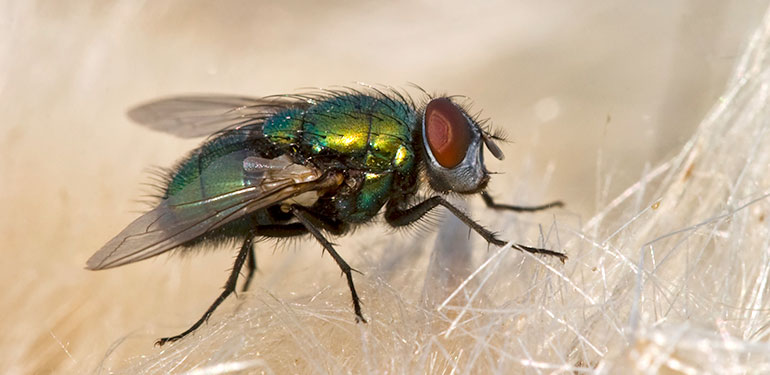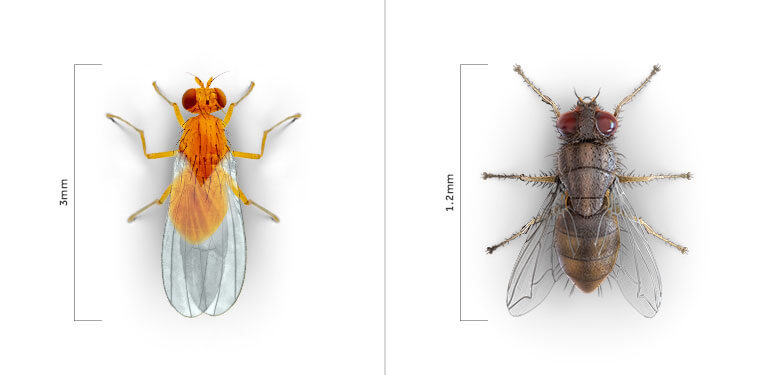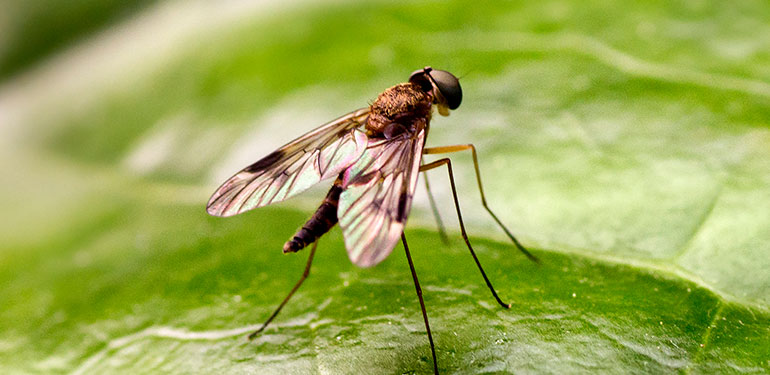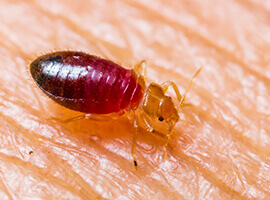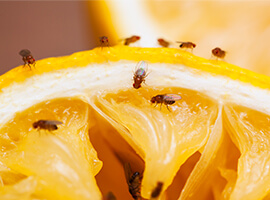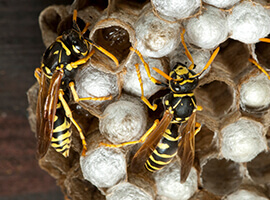
8 FACTS ABOUT FLIES
There are more than 110,000 fly species buzzing around the planet1—from fruit flies to house flies to flesh flies—each with their own habits and habitats.
Flies are more than just a nuisance. These buzzing insects also play important roles in nature, including pollinating plants, breaking down organic material, and serving as food for other bugs and animals. Find more fun fly facts below and then learn how to help keep them away.
1. FLIES MULTIPLY QUICKLY
Fruit fly; house fly
If you’ve ever wondered why a fly infestation can get out of hand so fast, it’s due to their rapid reproductive cycle. A singlefruit flycan lay around 500 eggs in her lifetime and the entire life cycle from egg to adult only takes about a week.2 Not to be outdone, a single female house fly can lay up to 500 eggs over the span of just three to four days and repeat the cycle multiple times throughout her life. House flies typically live 15 to 25 days, but can survive up to two months under optimal conditions.3So you can imagine how quickly their populations can increase!
2. FLIES CAN SPREAD DISEASE
Since house flies regularly feed and lay eggs on feces, garbage, decaying animals, and other filthy places, they can transfer disease-ridden microbes when they land on humans, household surfaces, and food that has been left out. Because of this, many fly species are known to spread disease to humans. In fact, the common house fly is suspected of transmitting at least 65 diseases to people, including:4
Dysentery
Diarrhea
Cholera
Typhoid fever
Leprosy
Anthrax
Tularemia
Tuberculosis
Yaws
Poliomyelitis
3. HOUSE FLIES DON’T CHEW
Flies don’t have mouthparts to chew. Instead, they spit out enzymes that turn solid food into a liquid that they can consume.4
4. FLIES TASTE WITH THEIR FEET
Flies have sensors on their tarsi, or feet, that help them determine whether that sandwich they just landed on will be a tasty snack.5
WE KNOW FLIES
TheInstitute of Insect Science for Family Healthraises hundreds of flies on a given day. We raise them, research them, and come up with new ways to help you fight them and keep these buzzing insects out of your home.
5. FLIES CONTRIBUTE TO THE FOOD CHAIN6,7
Carrion Fly
Carrion flies, including blow flies and flesh flies, lay their eggs in rotting animal carcasses. As gross as it sounds, their maggots feed on the decomposing animals and then release the nutrients into the soil through the digestion process.
Other types of flies frequently use animal feces as their breeding and feeding grounds. As their maggots feed, they break down the organic material and release the nutrients for plants, fungi, and bacteria to use. These buzzing insects’ penchant for poop is why picking up after your dog in the yard can helpkeep flies away from your home.
6. FLIES MAKE GREAT DETECTIVES8
The first recorded use of flies in a criminal investigation was in 13th-century China. By studying the fly population and their larval stages at a crime scene, these buzzing creatures help forensic scientists estimate the time of death. The fly species most helpful in forensic investigations include house flies, blow flies, and flesh flies.
7. SOME FLY SPECIES POLLINATE PLANTS
Midge
Some fly species—including bee flies, hoverflies, and midges—serve as pollinators for a variety of plants that are not attractive to bees. In fact, you can thank midges for satisfying your chocolate craving. These tiny flies are the primary pollinators of the cacao (or cocoa) tree.7
8. THE WORLD’S BIGGEST FLY9
An adult timber fly can grow to a whopping 8 centimeters (3.15 inches). These humongous flies live in Central and South America and get their name because they lay their eggs in dying trees. Despite their large size, timber flies are quite harmless.
HELP GET RID OF FLIES
Although flies play an important role in nature, most people don’t want these filthy insects flying around their home. Get expert tips to helpkeep flies awayand protect your family from these disease-spreading pests.
FIND SOLUTIONS FOR FLIES
Don’t let these buzzing insects invade your space. Help protect your family and home with our specially formulated products designed to get rid of flies.
